**Dynamic Diffuse Global Illumination**
Part 1
2019 April 1
Updated May 22
Dynamic Diffuse Global Illumination (DDGI) is a technique for computing
diffuse lighting with ray tracing to create changing, realistic rendering
for games. It allows developers to extend their existing light probe
tools, knowledge, and experience with ray tracing to eliminate bake
times and avoid light leaking.
Hardware-accelerated programmable ray tracing is now accessable
through DXR, VulkanRT, OptiX, Unreal Engine, and Unity. This enables
many ways to compute global illumination. DDGI is a new strategy for
lighting that expands developers' options.
Article contents:
1. [*This introduction*](index.html) to DDGI
2. [*Real-time global illumination*](intro-to-gi.html). What everyone in graphics should know.
2. [*DDGI overview*](overview.html) for choosing your GI strategy
3. [*Algorithm explanation*](algorithm.html) for programmers and researchers
4. *Implementation guide* to structure your integration plan (coming soon)
5. *Production optimization* techniques for peak performance (coming soon)
VFX Breakdown
==========================================================
Here's an example of the image quality that DDGI provides. These
images were rendered at 1080p on GeForce RTX 2080 Ti at 90 fps.
DDGI contributed 1 ms/frame to the render cost. That includes the
amortized bounding volume hierarchy (BVH) update, ray cast, ray shade,
and gathering in screen space during deferred shading.
DDGI is about diffuse lighting, but it also accelerates very rough and
second-bounce _glossy_ global illumination. Moreover, this article
explains how to combine the ray trace operations for smooth glossy
illumination with DDGI to improve the ray tracing throughput of
each. The sample glossy GI cost an additional 2 ms/frame in this
implementation, where it is configured for highest image quality.
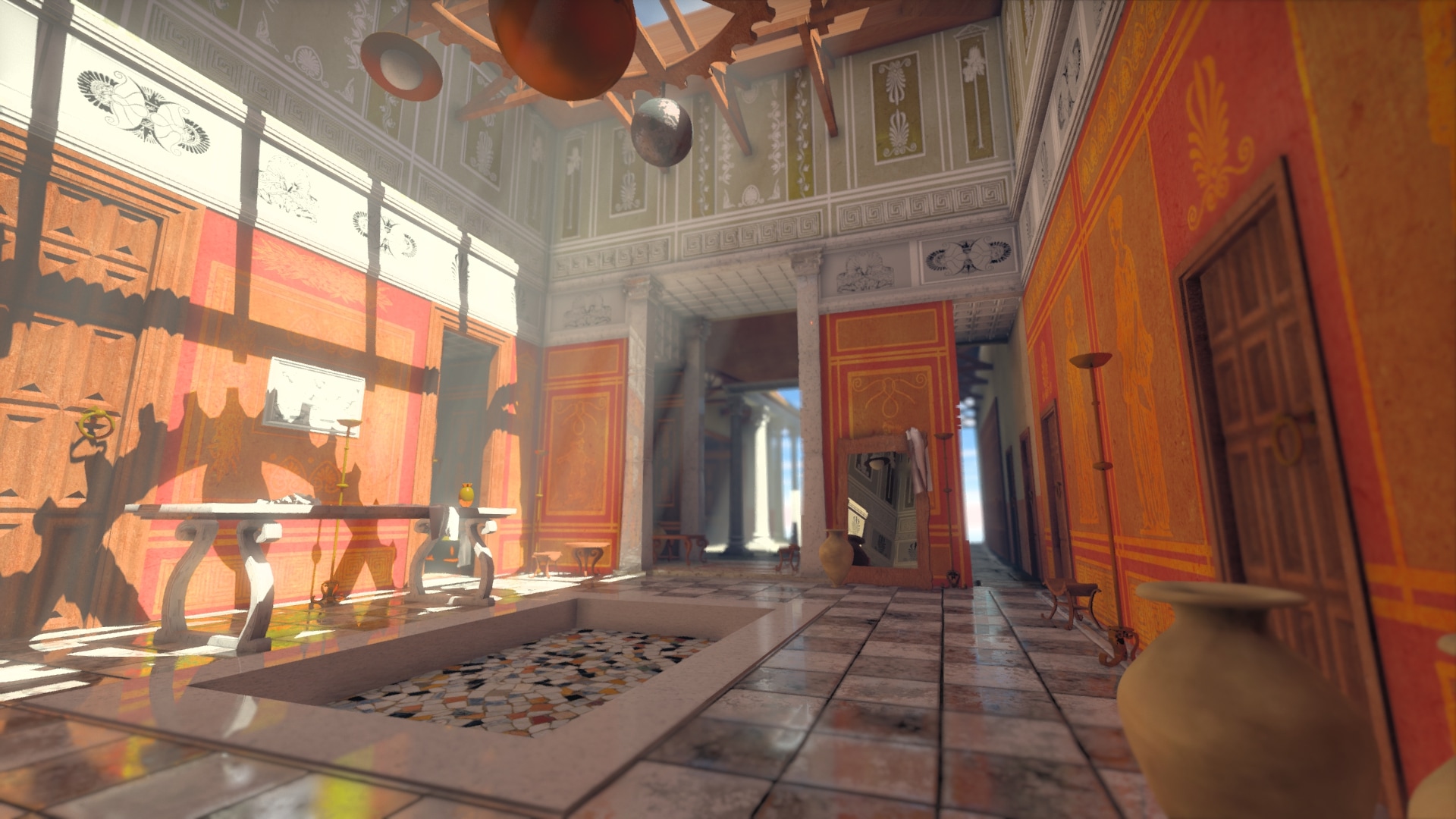
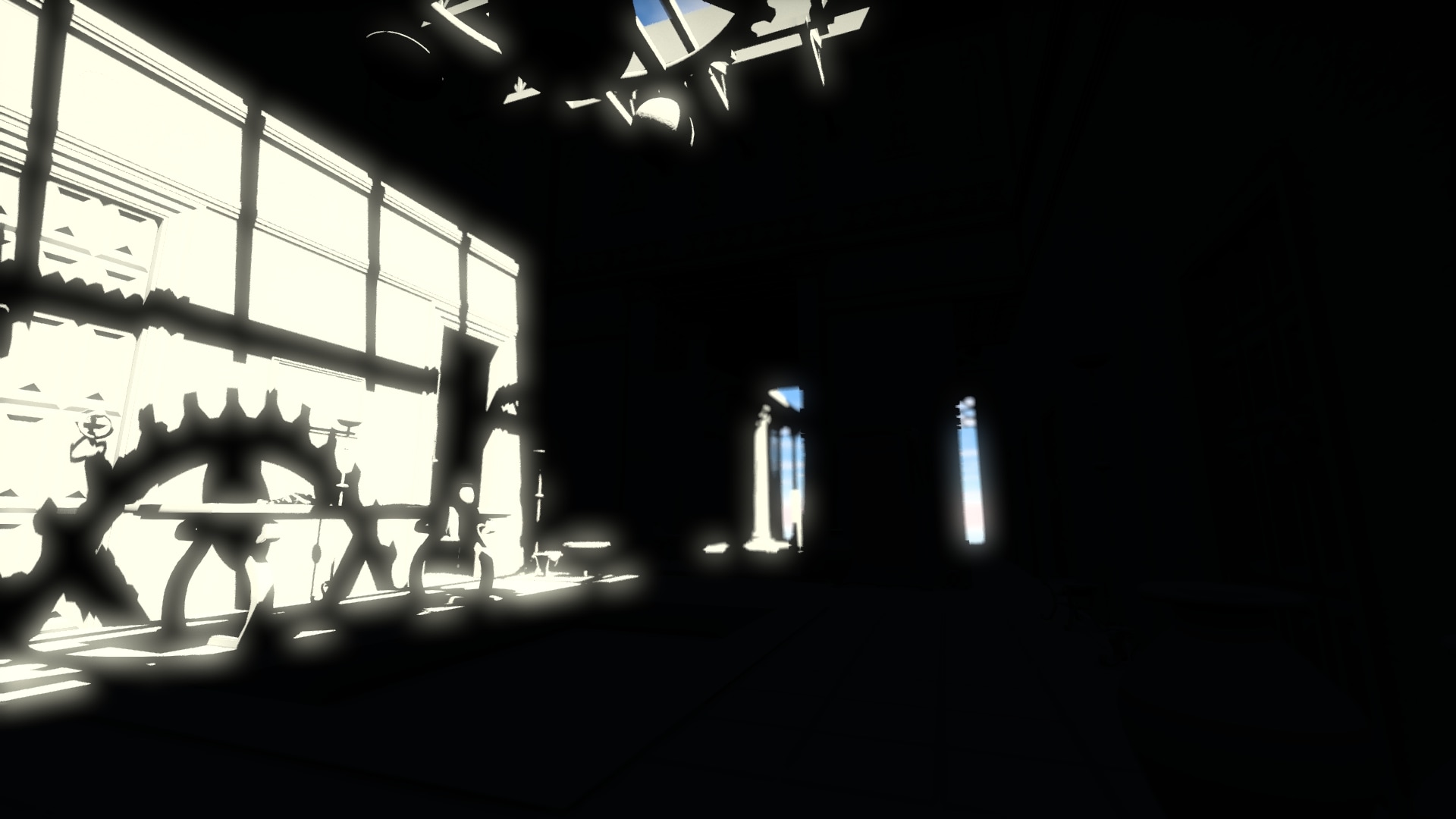 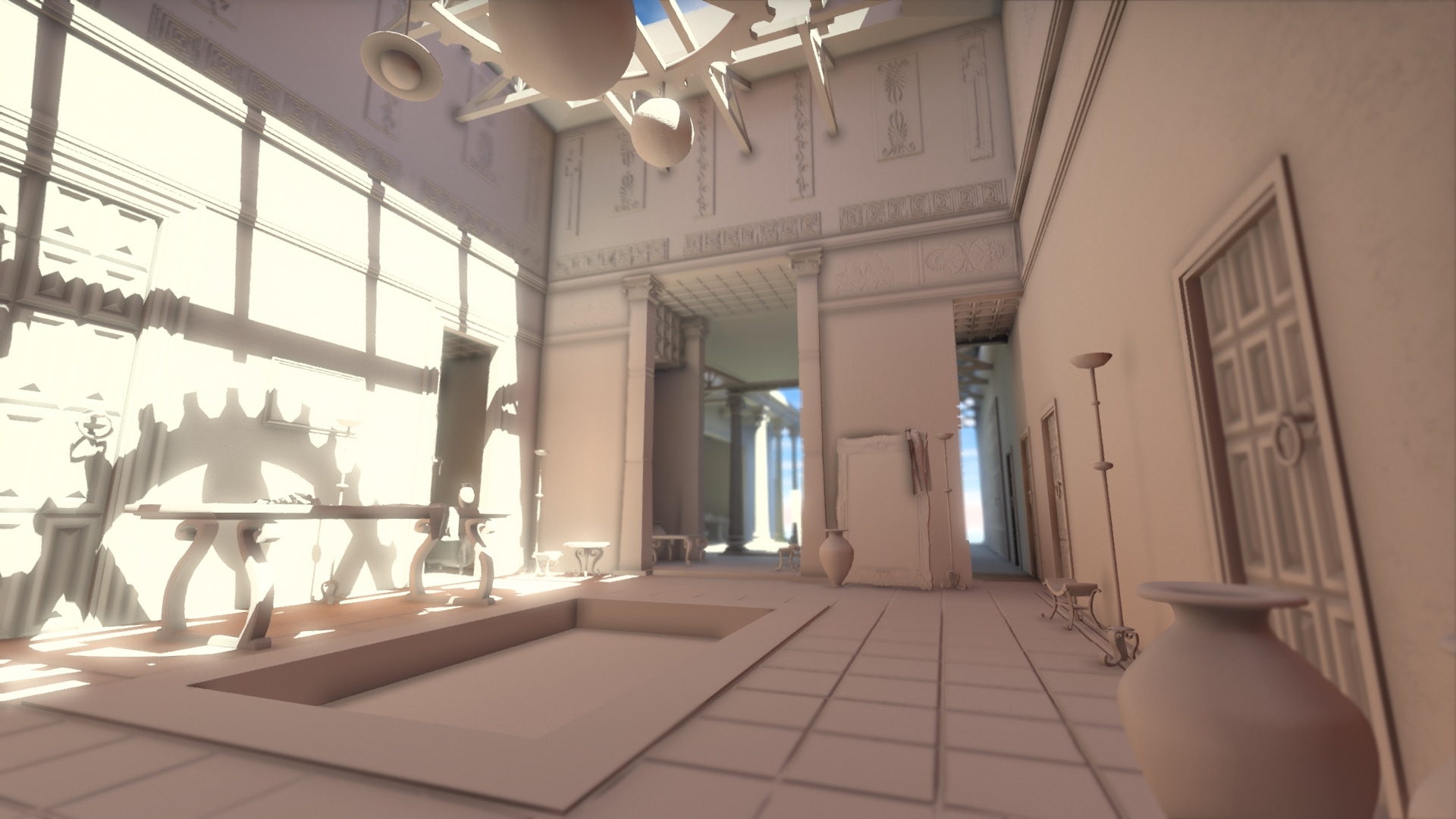
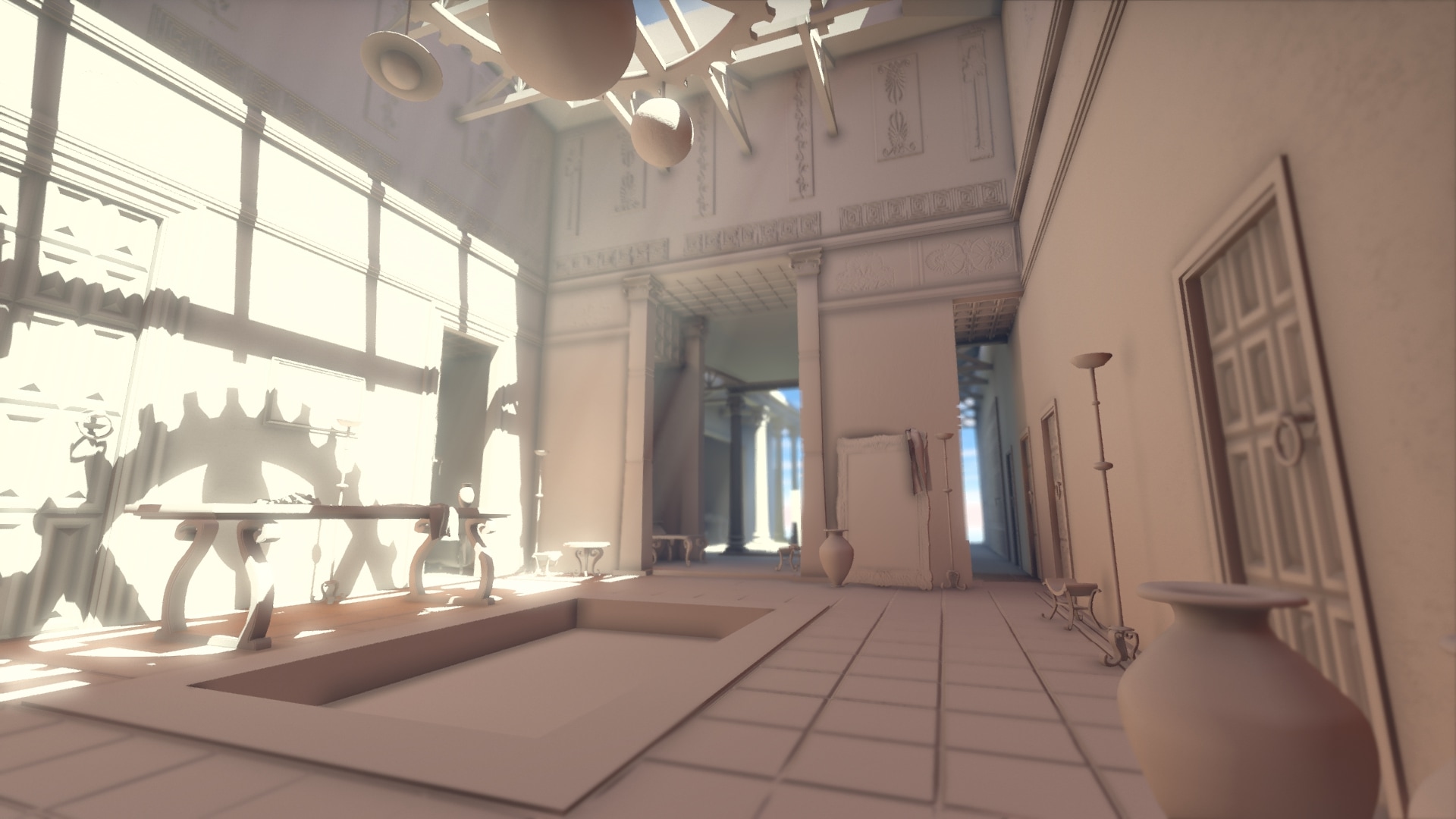 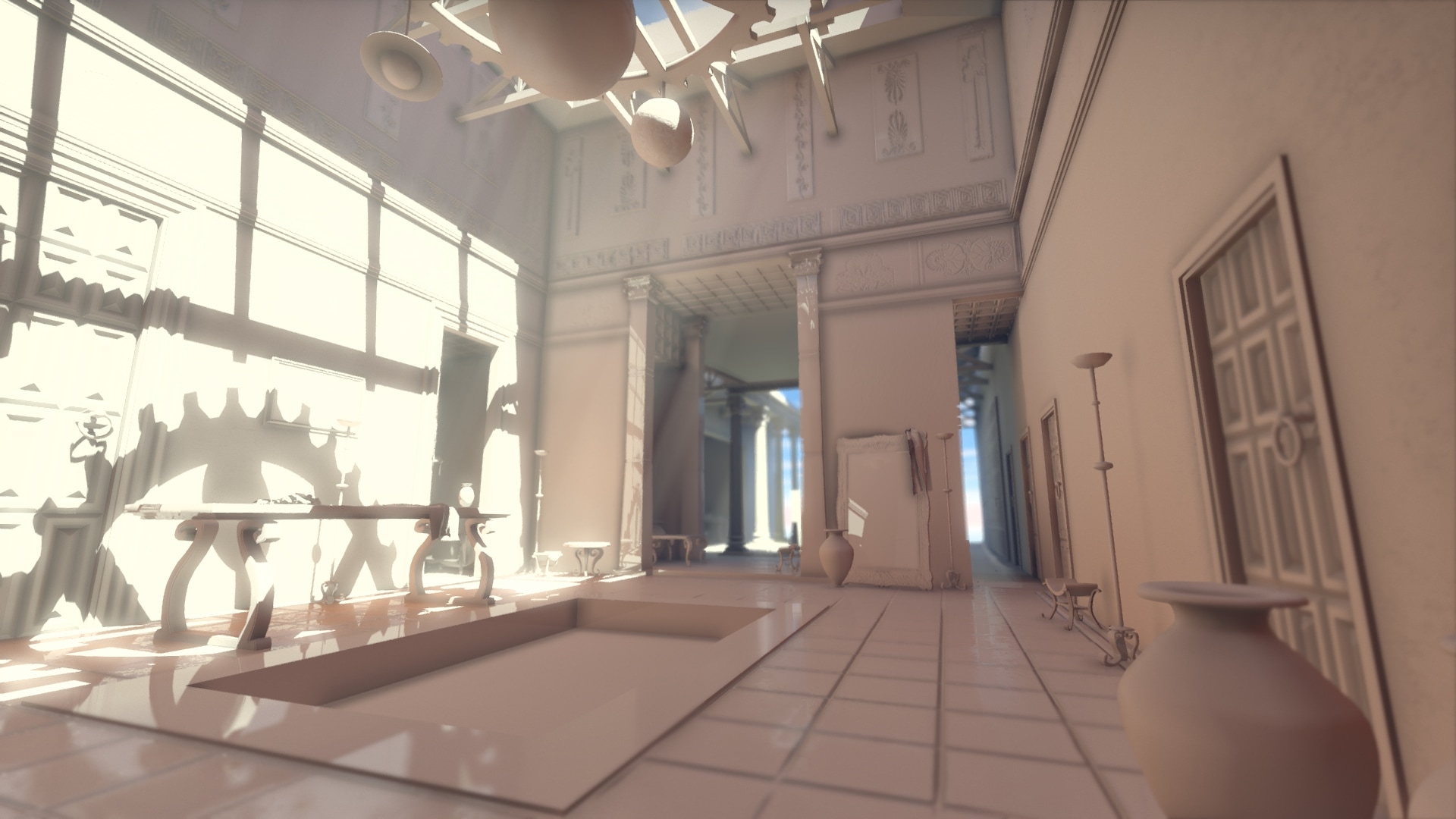

Advantages
==========================================================
DDGI is a good fit for:
- _Indoor-outdoor and indoor_: DDGI avoids *light leaks*
- _Game runtimes_: DDGI guarantees performance, *scales* across GPUs and resolutions up to 4k, and has *no noise*
- _Game production_: DDGI *avoids baking time* and per-probe tuning and accelerates your existing light probe workflow and expertise
- _Any light type_: DDGI automatically works with point, line, and area lights, skybox lighting, and emissive objects
- _Engines_: DDGI upgrades existing *light probe* engine data paths and tools
- _Content creation_: DDGI works with *fully dynamic* scenes and does not require manual intervention
- _Scalability_: *One code path* gives a smooth spectrum from baked light probes that avoid leaks
on legacy platforms, through slowly updating runtime GI on budget GPUs, all of the way up to instant dynamic GI on enthusiast GPUs.
Unlock the power of high end PCs while still supporting a broad base.
Costs
==========================================================
The major costs and limitations of DDGI are:
- 5 MB GPU RAM per cascade, peak *20 MB* for all cascades and intermediates
- *1-2 ms* per frame for best performance in fixed-time mode, or *1-2 Mrays* per frame for ultra, fixed-quality mode (on 2080 Ti those are the same)
- Overhead is minimized when also using ray tracing for other effects, such as glossy and shadow rays
- DDGI should be introduced early in look development and production.
GI changes lighting substantially, and requires more physically-plausible
geometry and tuning than direct light, and offers new gameplay opportunities.
- *Lighting flows slower* on low-end GPUs (world-space lag, no screen-space ghosting)
- Shadowmap-like *bias parameter* must be tuned to scene scale
- Cannot prevent leaks from zero-thickness/*single-sided* walls
- Must be paired with a *separate glossy global illumination* solution, such as screen-space ray tracing,
denoised geometric ray tracing, or environment probes
More Information
==========================================================
This article explains DDGI in several parts:
1. [*This introduction*](index.html) to DDGI
2. [*Real-time global illumination*](intro-to-gi.html). What everyone in graphics should know.
2. [*DDGI overview*](overview.html) for choosing your GI strategy
3. [*Algorithm explanation*](algorithm.html) for programmers and researchers
4. *Implementation guide* to structure your integration plan (coming soon)
5. *Production optimization* techniques for peak performance (coming soon)
The team at NVIDIA is working with partners on the first engine and
game integrations of DDGI now. During that process I'm updating this
article with new information on best practices and additional
implementation detail. Game and engine developers can contact Morgan McGuire
/ [@CasualEffects](https://twitter.com/CasualEffects) for
integration support from NVIDIA.
In addition to the latest information in this article, several
previous presentations describe the basic ideas and give targetted
experimental results. DDGI was first presented at GTC'19 and GDC'19 in
the NVIDIA sponsored sessions. You can [see the video online](https://gdcvault.com/play/1026182/).
An early version of DDGI is also described in the peer-reviewed research paper,
> Zander Majercik, Jean-Philippe Guertin, Derek Nowrouzezahrai, and Morgan McGuire,
> **Dynamic Diffuse Global Illumination with Ray-Traced Irradiance Probes**,
> [Journal of Computer Graphics Tools](http://jcgt.org/), April 2019 (to appear)
with our academic collaborators at McGill and the University of Montreal. That
version was presented for a scientific audience at [I3D'19](http://i3dsymposium.github.io/2019/).
[Next Page: Global Illumination ==> ](intro-to-gi.html)
* * * *
I wrote this blog article in collaboration with my colleagues [Zander Majercik](https://research.nvidia.com/person/zander-majercik)
and [Adam Marrs](http://www.visualextract.com/) at NVIDIA.